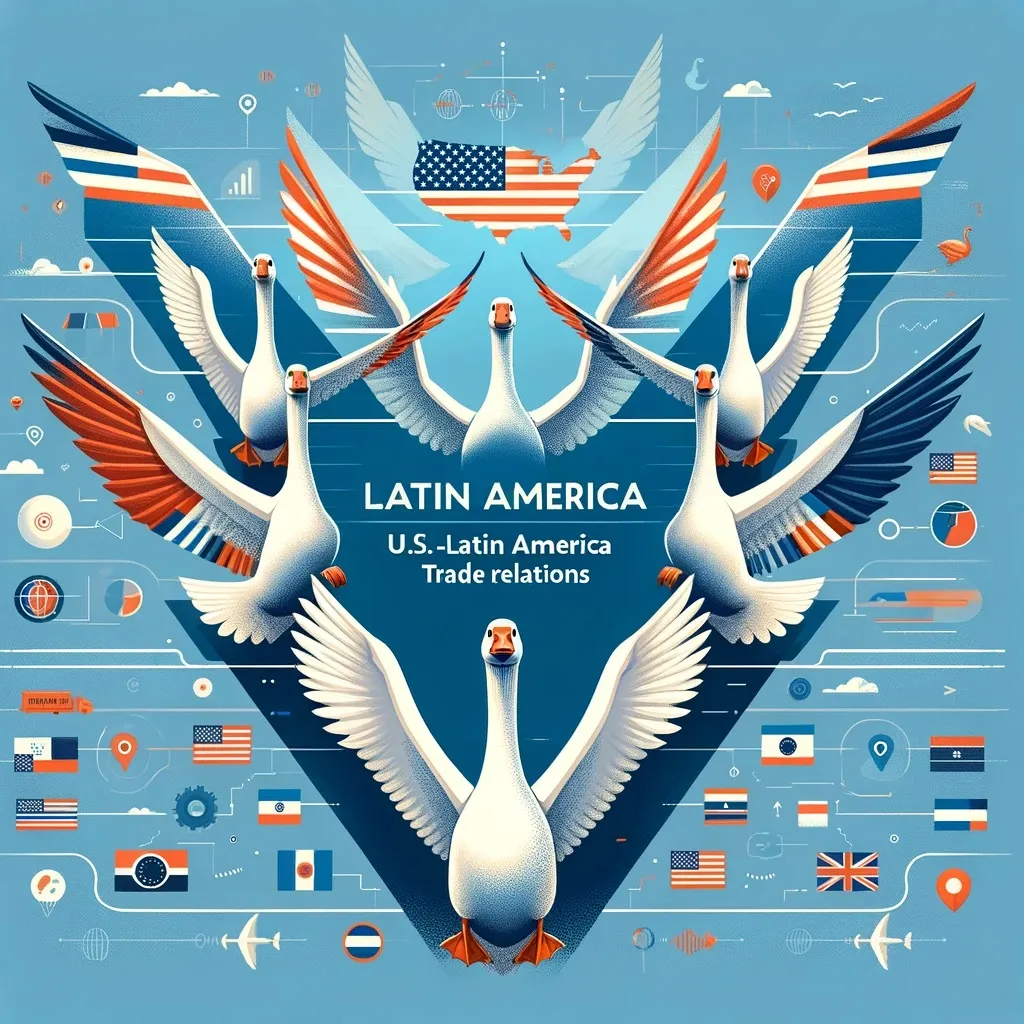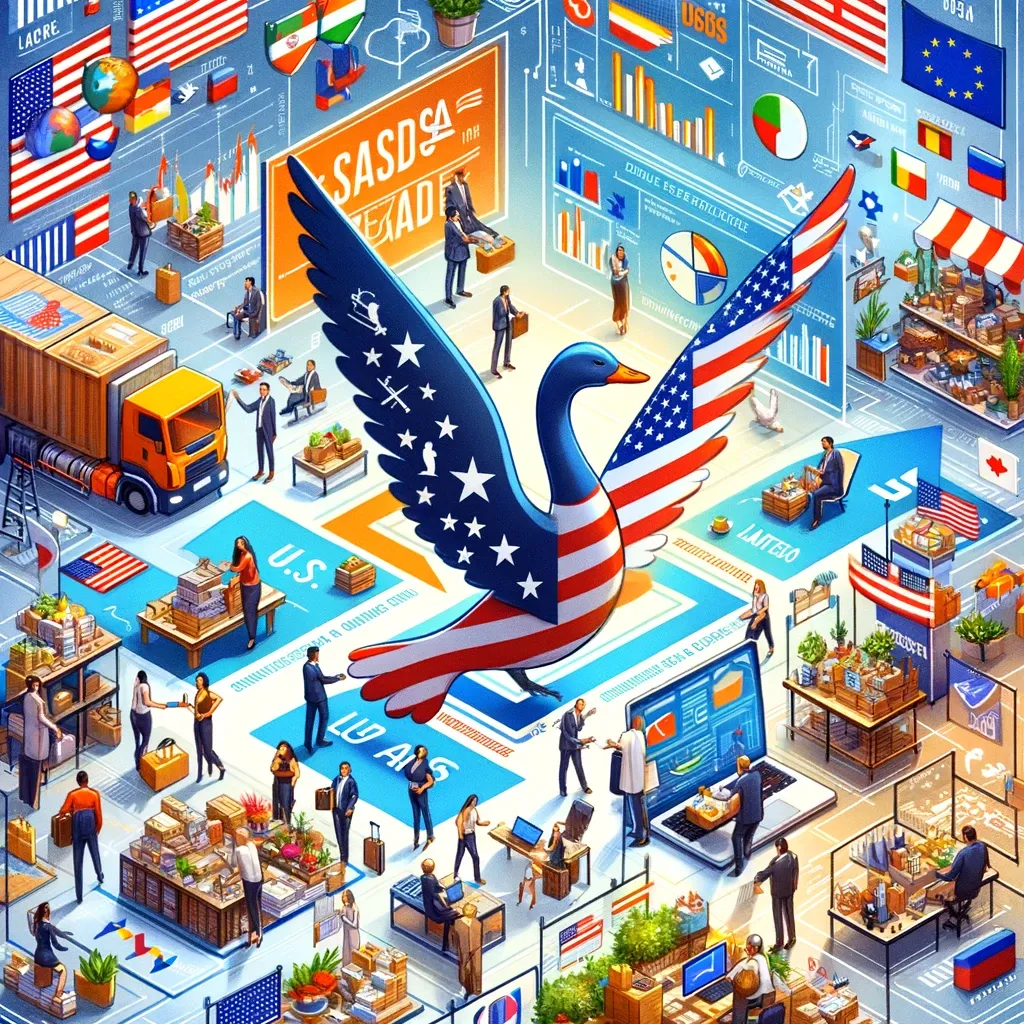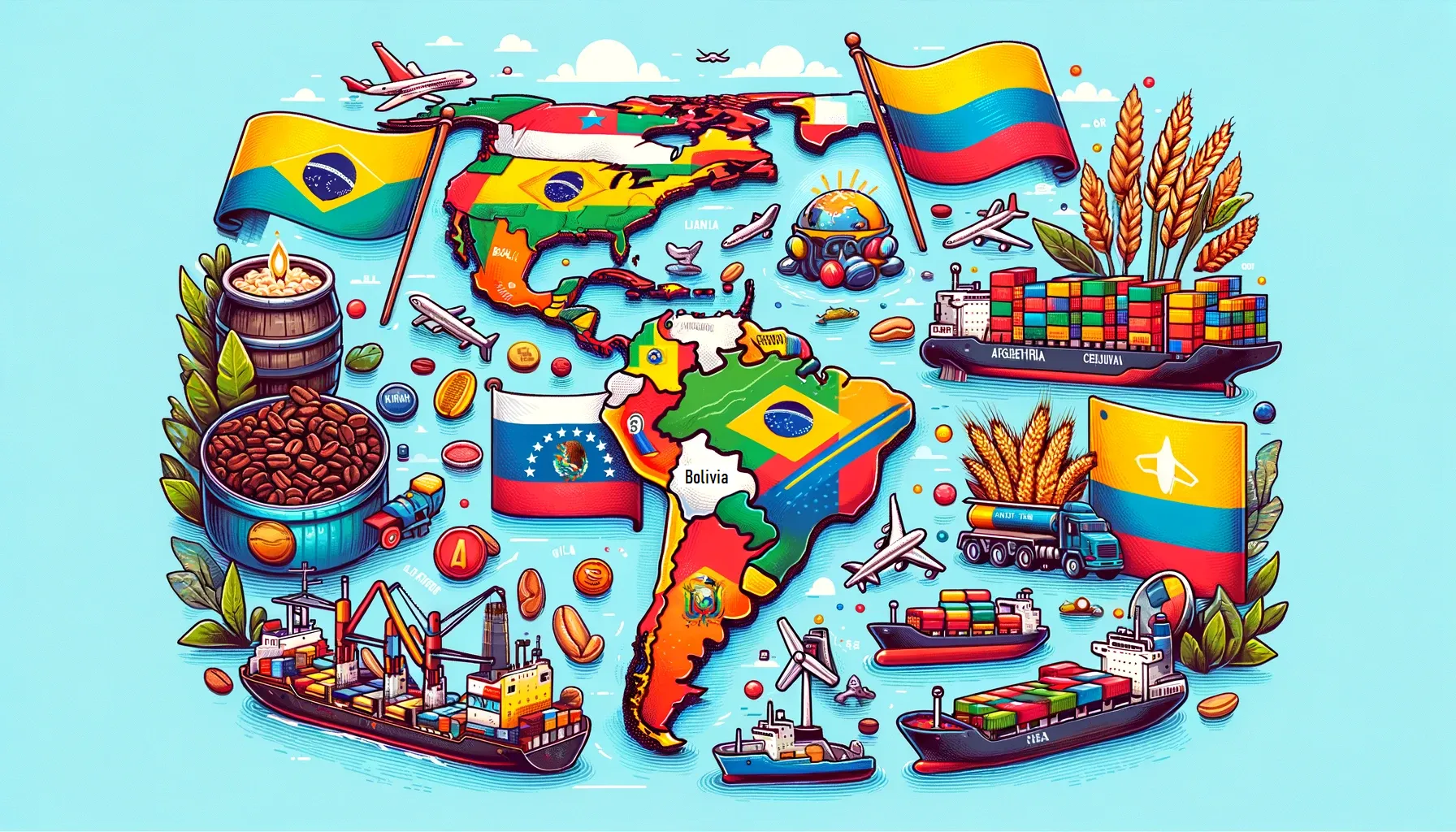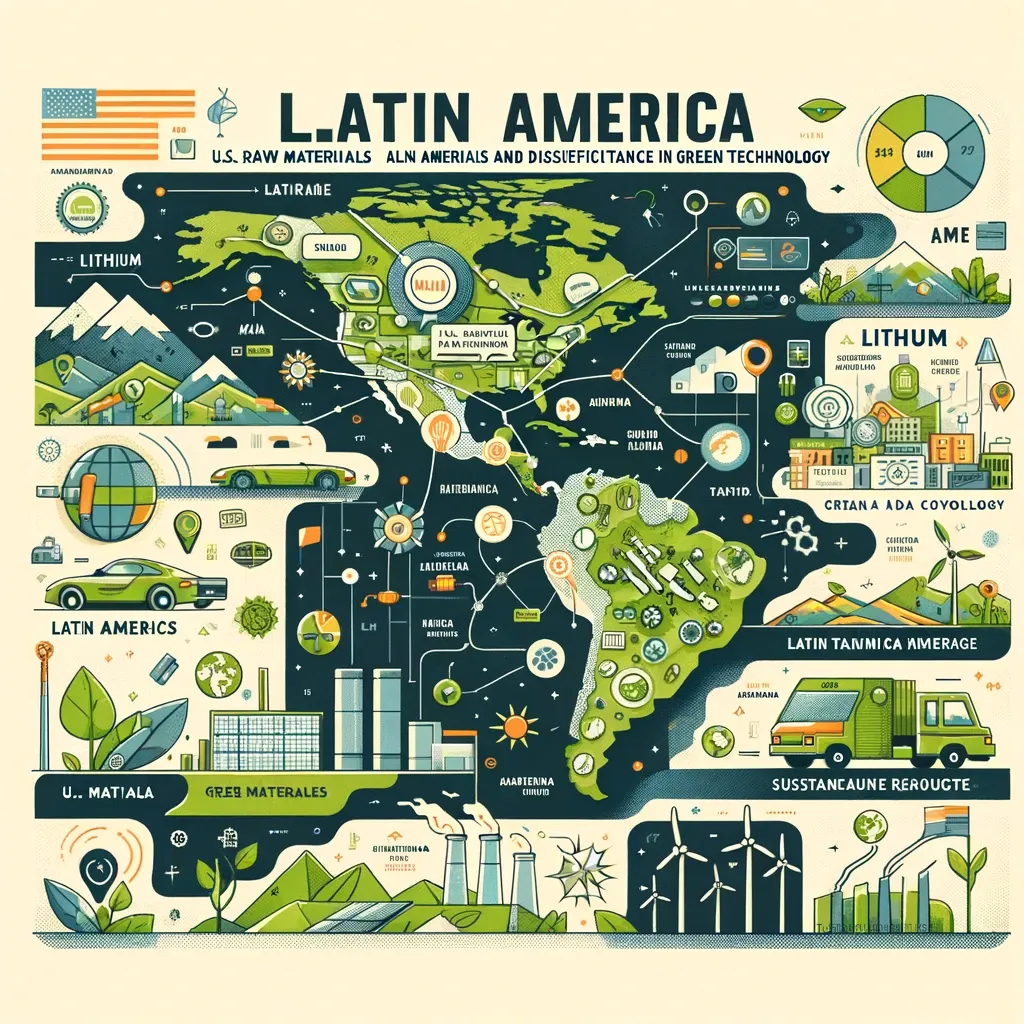Seizing Opportunities Now: How SMEs Can Apply the Flying Geese Paradigm in U.S.-Latin America Trade
Introduction
In today's rapidly evolving economic landscape, the Flying Geese Paradigm offers a practical framework for U.S. and Latin American SMEs to enhance their market presence and growth. This blog post delves into actionable strategies that these businesses can adopt to capitalize on this paradigm in real-time.

This infographic represents the Flying Geese Paradigm as it applies to U.S.-Latin America trade relations. The geese, each symbolizing a different country from Latin America and the United States, are shown in a V-formation. The lead goose (the Unites States) illustrates the collaborative leadership in trade.
Understanding the Paradigm in Today's Context
The Concept: The Flying Geese Paradigm symbolizes economic growth led by a 'front-runner' nation, influencing and aiding the development of neighboring countries.
Modern Application: For SMEs, this translates into leveraging strengths and learning from the lead market (the U.S.) while fostering symbiotic relationships that benefit all parties involved.
Practical Strategies for SMEs
1. Market Research and Adaptation
- U.S. SMEs: Research Latin American markets to understand local consumer behaviors, preferences, and legal frameworks.
- Latin American SMEs: Study U.S. market trends, consumer needs, and regulatory requirements.
2. Building Cross-Cultural Relationships
- Networking: Attend international trade shows and join business forums to build networks.
- Partnerships: Seek partnerships with businesses in the target market for mutual learning and support.
3. Leveraging Technology for Market Penetration
- E-Commerce Platforms: Utilize online platforms to reach wider audiences in the target market.
- Social Media Marketing: Employ targeted social media strategies to engage with specific demographics.
4. Focusing on Niche Markets
- Specialization: Identify niche markets in the target region and tailor products or services to meet those specific needs.
5. Utilizing Government and Non-Government Resources
- Trade Missions and Grants: Take advantage of trade missions, grants, and incentives offered by governments and NGOs.
Case Studies: Real-World Examples
1. Chilean Wine in the U.S. Market
- Background: A small Chilean vineyard wanted to expand its market reach to the United States.
- Strategy: Utilized U.S. AI market research to understand consumer preferences, collaborated with a U.S. distributor for market entry, and employed targeted AI digital marketing.
- Outcome: Successfully penetrated the U.S. market, gaining a loyal customer base and increasing revenue by 40% in the first year.
- AI Marketing Role: Utilized data analytics to identify trending wine preferences in different U.S. regions, optimizing targeted advertising campaigns.
2. American Software Firm in Argentina
- Background: A U.S. software SME aimed to outsource development work to Argentina.
- Strategy: Established a partnership with an Argentinian tech firm, shared technological expertise, and adapted products to local market needs.
- Outcome: Enhanced product offerings at a lower cost, improved innovation capabilities, and strengthened business ties in Latin America.
- AI Marketing Role: Employed AI-driven customer relationship management tools to better understand client needs and tailor software solutions.
3. Peruvian Superfoods Entering North America
- Background: A Peruvian company specializing in superfoods, like quinoa and maca, sought to tap into the health-conscious North American market.
- Strategy: Highlighted the unique health benefits of their products, leveraged e-commerce for direct-to-consumer sales, and utilized influencer marketing.
- Outcome: Built a strong online presence, established a niche market, and saw a steady increase in sales and brand recognition.
- AI Marketing Role: Leveraged AI-powered social media analytics to engage with health-conscious consumers and influencers effectively.
4. U.S. Renewable Energy Solutions in Brazil
- Background: A U.S. firm specializing in renewable energy solutions sought expansion opportunities in Brazil.
- Strategy: Collaborated with local Brazilian energy companies, adapted technologies to the local environment, and participated in government renewable energy initiatives.
- Outcome: Secured several contracts for solar and wind energy projects, contributing to sustainable development in Brazil and expanding the company’s global footprint.
- AI Marketing Role: Used predictive analytics to identify potential Brazilian partners and market demand for specific renewable technologies.
5. Mexican Fashion Retailer's U.S. Debut
- Background: A Mexican SME in fashion retail aimed to introduce its brand to the U.S. market.
- Strategy: Developed a bilingual e-commerce platform, used social media for brand awareness, and created cross-cultural designs.
- Outcome: Gained popularity among Hispanic communities in the U.S. and expanded customer base to include a diverse American audience.
- AI Marketing Role: Implemented AI-driven trend analysis to adapt fashion lines to the evolving tastes of both Hispanic and broader U.S. markets.

SMEs from the U.S. and Latin America actively engaging in trade, embodying the practical application of the Flying Geese Paradigm. The image depicts a bustling marketplace scene with various small and medium-sized businesses interacting. It showcases activities like product exchange, negotiations, and digital marketing. Elements of cross-cultural collaboration are evident, with diverse entrepreneurs, flags of Latin American countries and the U.S., and digital screens displaying market data.
Conclusion: The Time is Now
For U.S. and Latin American SMEs, the Flying Geese Paradigm isn't just a theoretical model; it's a roadmap to tangible growth and success in today's interconnected markets. By adopting these practical strategies, businesses can navigate the complexities of international trade and realize their full potential.




























